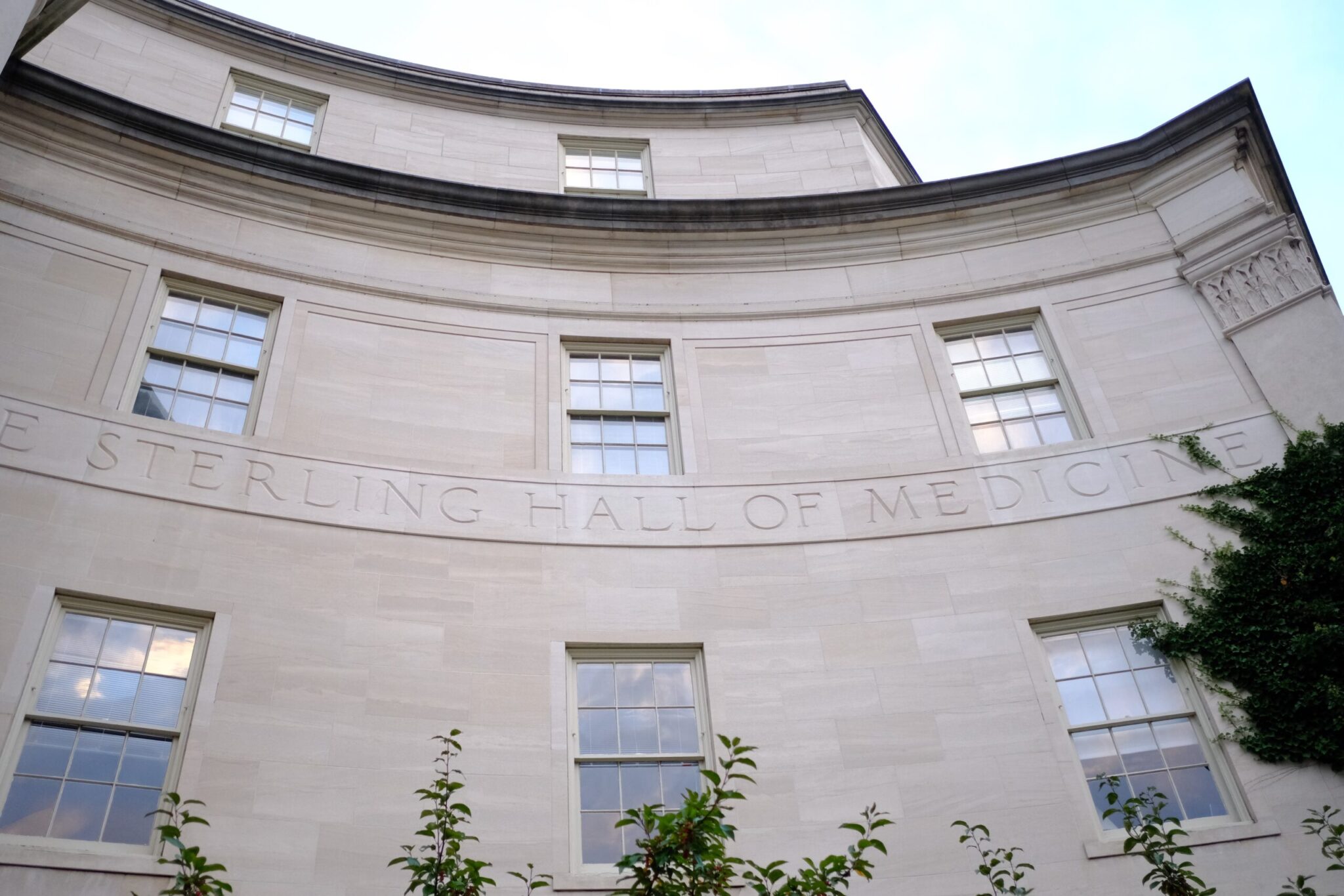Yale-led study discovers disparities in stroke treatment among patients receiving hospital cardiac care
The researchers found that patients who suffer from strokes following cardiac interventions are less likely to receive the most effective stroke treatment, EVT.

Ann Hui Ching
A new Yale-led study has found that patients who suffer strokes after heart surgery often don’t receive adequate treatment.
Researchers at the School of Medicine, Brown and the University of Washington analyzed a nationwide database with data from 4,888 hospitals between 2016 and 2020. They found that less than two percent of patients who were diagnosed with both stroke and cardiac interventions were treated with endovascular thrombectomy, or EVT — the only effective treatment for patients dealing with cardiac malfunctions.
“I’ve always felt that we weren’t able to offer as many stroke treatments to those patients [in cardiac intensive care units],” Adam de Havenon ’01, a professor of neurology at the School of Medicine and the lead author of the study, told the News. “But in medicine, there’s a huge gap between something you anecdotally experience and demonstrating that in a data set, which is what we did in this study.”
According to de Havenon, cardiac interventions, after neurosurgical procedures, are the second leading surgical procedure that causes stroke. During cardiac interventions, surgeons can accidentally knock debris off of the aortic arch, causing clots and plaque to travel upstream to the brain, increasing the likelihood of stroke, specifically ischemic stroke.
Fabio Ramponi, a professor of cardiac surgery at the School of Medicine, the risk of stroke varies for different cardiac interventions. For minor surgeries, like valve replacement, the risk of stroke is roughly two percent. For patients who need multiple cardiac interventions, the risk of stroke increases to 10 percent.
The researchers first analyzed patients’ billing codes and identified those who received EVT, the most effective stroke treatment for patients with ischemic strokes. During EVT, a surgeon inserts a thin catheter through a limb into the patient’s brain and uses a stent retriever to remove the clot. EVT is only effective within 24 hours of stroke symptoms. The team also determined the exact dates patients were diagnosed with a stroke and when they were treated with EVT.
The researchers then identified the presence and timing of cardiac intervention among the patients treated with EVT. Of the 630,000 stroke patients, more than 12,000 patients also had a cardiac procedure, which they defined as including both cardiac surgeries and other interventions, such as catheter-based stent placement and inserting cardiac pacemakers.
“What we found was that individuals who had their stroke after cardiac procedures were less than half as likely to get [EVT] within three days after the cardiac surgery,” de Havenon said. “And that was consistent with our hypothesis and my personal experience.”
According to Kevin Sheth, a professor of neurology at the School of Medicine and a co-author of the study, patients who had both a cardiac intervention and ischemic stroke — and were then treated with EVT — were twice as likely to be discharged home. Many patients who weren’t treated with EVT had to endure long-term care, Sheth said.
Ramponi noted that some patients may not receive EVT because it is harder to detect stroke among cardiac patients. While it can help doctors guess if there is decreased blood flow on one side of the body, doctors can’t always be sure.
“When the patient gets to intensive care, it’s hard to make a full neurologic exam because the patient is still under some sort of sedation,” Ramponi told the News. “The anesthesia is still lingering, so it’s hard to assess in a very systematic way.”
Further, de Havenon argued that it’s difficult to determine if EVT will be useful for patients — especially if doctors observe stroke symptoms hours after the patient wakes up from sedation — because the treatment is only effective for a short amount of time. Some cardiac procedures force patients to be sedated for days, making stroke detection even more difficult, according to de Havenon.
Still, many doctors differ on how to help identify strokes in patients following cardiac interventions. For de Havenon, medical workers ought to monitor these patients more closely. For example, nurses could wake patients out of sedation to identify potential signs of stroke. They could also use bedside tests, such as an electroencephalogram, or EEG, to help determine the onset of stroke, he said.
Still, Ramponi argued that doctors should focus more on preventing strokes altogether.
“In my opinion, the focus has to be more on prevention,” Ramponi said. “Even if you detect [the stroke] early, the prognosis for the patient won’t be as good as if they never had a stroke.”
The National Institute of Health estimates that roughly 795,000 people experience strokes in the United States per year.







